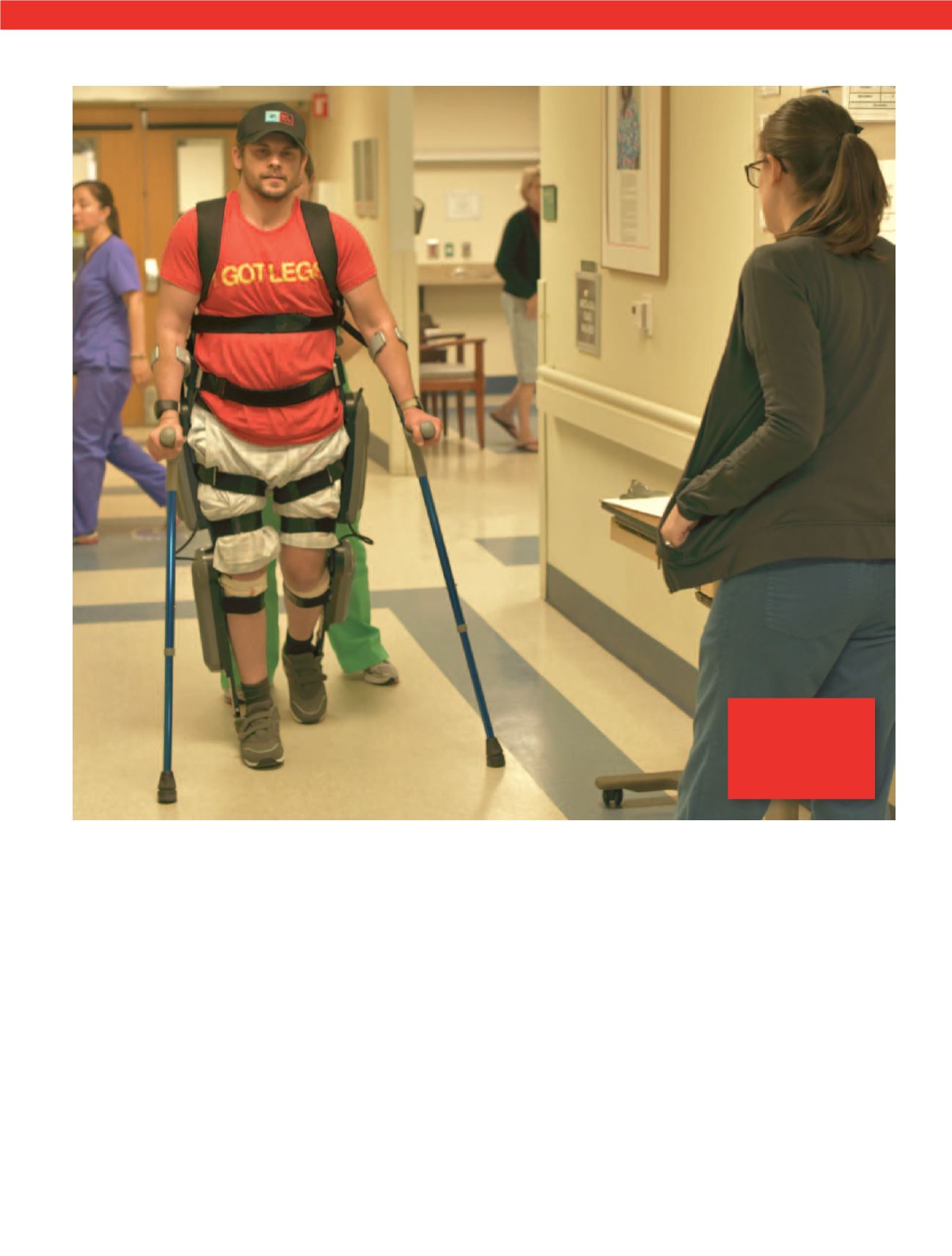

37
www.MountPleasantMagazine.com|
www.BestOfMountPleasant.com|
www.ILoveMountPleasant.commotorized joints that move the legs. Crutches help keep
the body stable. Adam wears a watch that allows him to
choose one of three available modes: sit, stand and walk.
The exoskeleton soon will be approved for a stair-climbing
function, he said.
“I want this technology to come to life,” said Adam,
who learned to use the exoskeleton at the MUSC-Roper
Hospital Spinal Cord Injury Center. “Not many people
know about it.”
Indeed, the equipment, launched in 2012 and the
only exoskeleton approved by the Food and Drug
Administration for personal home use, is on the cutting
edge, still relatively new to the market. Adam believes
there might be 70 in the whole world and that he’s only
around the 20th person in the United States to have his
own exoskeleton.
They’re rare and they’re also expensive. ReWalk gave
him 120 days to pay off his exoskeleton, and Adam hopes
to raise $100,000 before then. He sells T-shirts around
town and is running a crowdfunding campaign on Go
Fund Me. He hopes taking part in the Bridge Run also
will help him raise money.
To train for the Bridge Run, Adam first had to gain
mastery over the exoskeleton, a long process that typically
takes 30 to 50 supervised sessions. Adam’s first three
or four lessons were devoted to simply learning how to
balance himself in a standing position, and it was another
two months before he was comfortable enough to walk.
He’s has been attending three-hour-long sessions three
times a week at Roper since August 2015 and now plans to
shift his training to his home on his own device.
“Roper has to sign you off on a bunch of skills, like a
Adam Gorlitsky learned
to use the exoskeleton
at the MUSC-Roper
Hospital Spinal Cord
Injury Center.
















